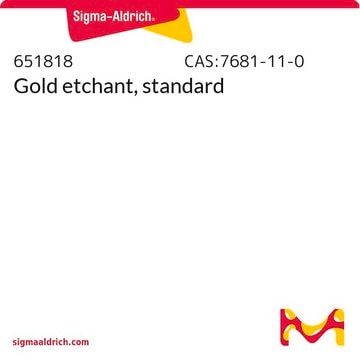429422
Potassium iodide
AnhydroBeads™, −10 mesh, 99.998% trace metals basis
Synonim(y):
Potassium monoiodide
About This Item
Polecane produkty
ciśnienie pary
1 mmHg ( 745 °C)
linia produktu
AnhydroBeads™
Próba
99.998% trace metals basis
Postać
beads
zanieczyszczenia
<100 ppm water
wielkość cząstki
−10 mesh
mp
681 °C (lit.)
ciąg SMILES
[K+].[I-]
InChI
1S/HI.K/h1H;/q;+1/p-1
Klucz InChI
NLKNQRATVPKPDG-UHFFFAOYSA-M
Szukasz podobnych produktów? Odwiedź Przewodnik dotyczący porównywania produktów
Powiązane kategorie
Informacje prawne
wyposażenie dodatkowe
Hasło ostrzegawcze
Danger
Zwroty wskazujące rodzaj zagrożenia
Zwroty wskazujące środki ostrożności
Klasyfikacja zagrożeń
STOT RE 1 Oral
Organy docelowe
Thyroid
Kod klasy składowania
6.1D - Non-combustible acute toxic Cat.3 / toxic hazardous materials or hazardous materials causing chronic effects
Klasa zagrożenia wodnego (WGK)
WGK 3
Środki ochrony indywidualnej
Eyeshields, Gloves, type N95 (US)
Certyfikaty analizy (CoA)
Poszukaj Certyfikaty analizy (CoA), wpisując numer partii/serii produktów. Numery serii i partii można znaleźć na etykiecie produktu po słowach „seria” lub „partia”.
Masz już ten produkt?
Dokumenty związane z niedawno zakupionymi produktami zostały zamieszczone w Bibliotece dokumentów.
Klienci oglądali również te produkty
Nasz zespół naukowców ma doświadczenie we wszystkich obszarach badań, w tym w naukach przyrodniczych, materiałoznawstwie, syntezie chemicznej, chromatografii, analityce i wielu innych dziedzinach.
Skontaktuj się z zespołem ds. pomocy technicznej









